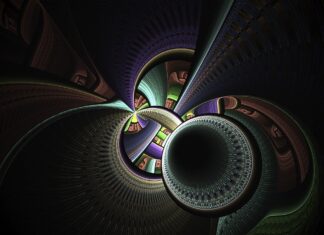LightSail is an innovative space exploration project that harnesses the power of sunlight to propel small spacecraft through space. Developed by The Planetary Society, LightSail aims to demonstrate the feasibility of using solar sails for propulsion in the near-Earth environment. With its groundbreaking technology and ambitious mission, LightSail has captured the imagination of scientists, space enthusiasts, and the general public alike.
At its core, LightSail relies on the concept of solar sailing. A solar sail is a spacecraft propelled by the momentum imparted to it by photons, or particles of light, as they bounce off a large, reflective surface. The fundamental principle behind solar sailing is that light carries momentum. When photons strike a reflective surface, they transfer some of their momentum to the sail, causing a small but constant acceleration. This continuous acceleration over time can eventually result in significant velocity changes, allowing a solar sail spacecraft to travel vast distances without conventional propulsion systems.
The LightSail project has been designed to demonstrate the viability of solar sailing in a practical and accessible manner. It consists of a small spacecraft with a square solar sail, measuring about 32 square meters (approximately 344 square feet). The sail is made of an ultra-thin, reflective material called Mylar, which is supported by thin booms that unfold after the spacecraft is deployed in space. The entire spacecraft, including the sail and the control systems, weighs only a few kilograms.
To fully exploit the potential of solar sailing, LightSail utilizes a combination of two critical factors: sunlight and the pressure of solar photons. Sunlight provides the necessary energy for the mission by delivering photons that exert pressure on the sail. As photons collide with the sail’s surface, they transfer a small amount of their momentum, effectively propelling the spacecraft forward. This process allows LightSail to continuously accelerate over time without the need for conventional propellants.
The pressure exerted by sunlight is incredibly weak—roughly equivalent to the weight of a paperclip resting on your hand. However, in the vacuum of space where there is no atmospheric resistance, even this minuscule force can generate significant momentum over time. The spacecraft can gradually increase its velocity as the photons continually push against the sail, allowing LightSail to undertake long-duration missions and reach distant destinations within the solar system.
LightSail’s operational concept involves a two-stage process. The first stage, known as deployment, focuses on the unfurling and stabilization of the solar sail. Once in space, the spacecraft remains in a compact configuration during its initial orbit. When the optimal conditions are met, a series of commands are sent to the spacecraft to initiate the deployment sequence. This sequence activates mechanisms that gently unfurl the sail and extend the supporting booms, creating a large, flat surface area for maximum light capture.
The deployment process requires careful planning and precision. The lightweight booms must be unfurled without any tangling or damage, and the sail needs to achieve the desired tension for optimal performance. To achieve this, LightSail incorporates advanced deployment mechanisms, such as motor-driven spools and tensioning devices, to ensure a smooth and controlled unfurling process. This critical phase sets the stage for the second stage, where the sail harnesses sunlight for propulsion.
Once the sail is fully deployed, LightSail enters the operational phase of its mission. The spacecraft begins to experience the gentle but continuous acceleration provided by the pressure of solar photons. This acceleration gradually increases the spacecraft’s velocity, allowing it to reach higher orbits or even escape Earth’s gravity altogether. By carefully orienting the sail relative to the Sun, the mission control team can control the spacecraft’s trajectory and perform various maneuvers, including changes in orbit and trajectory corrections.
Navigating in space using solar sailing poses unique challenges. Unlike traditional rocket engines, solar sails do not provide instantaneous thrust. Instead, solar sails rely on the steady and continuous pressure of sunlight to gradually accelerate the spacecraft. This means that planning and executing maneuvers require careful consideration of timing and positioning. Mission control must carefully calculate the optimal orientation of the sail relative to the Sun to maximize the photon pressure and achieve the desired trajectory.
One of the key advantages of solar sailing is its potential for long-duration missions. Conventional propulsion systems rely on finite supplies of propellant, limiting the spacecraft’s operational lifespan. In contrast, LightSail can theoretically continue to accelerate and travel indefinitely as long as it remains within the range of sunlight. This opens up new possibilities for missions to explore and study destinations in the solar system that were previously considered unreachable or required significant resources for fueling and maneuvering.
In addition to its scientific objectives, LightSail also serves as an educational and outreach tool. The Planetary Society, a nonprofit organization dedicated to advancing space exploration, has made it a mission to involve and engage the public in the excitement of solar sailing. By providing regular updates, educational materials, and real-time mission data, LightSail aims to inspire and educate the next generation of scientists, engineers, and space enthusiasts. The project’s open approach allows anyone with an internet connection to follow along and learn about the challenges and discoveries of solar sailing.
LightSail’s successful demonstration of solar sailing technology could have significant implications for future space exploration. Solar sails could potentially enable cost-effective and sustainable missions to explore the outer reaches of our solar system and beyond. By relying on sunlight as a free and virtually limitless energy source, spacecraft equipped with solar sails could revolutionize our understanding of the universe and pave the way for ambitious interstellar missions.
While LightSail is a pioneering project, it is important to note that solar sailing is not a new concept. The idea was first proposed by the legendary physicist and engineer Johannes Kepler in the 17th century. However, technological advancements in materials, deployment mechanisms, and spacecraft control systems have made it possible to realize Kepler’s vision in the form of projects like LightSail. The successful deployment and operation of LightSail demonstrate the progress we have made in turning the concept of solar sailing into a practical and achievable reality.
In conclusion, LightSail represents a groundbreaking project that aims to revolutionize space exploration through the innovative use of solar sailing technology. By harnessing the pressure of sunlight, this small spacecraft can achieve continuous acceleration and propel itself through the vacuum of space without the need for conventional propellant. With its mission to demonstrate the feasibility of solar sailing and engage the public in the excitement of space exploration, LightSail showcases the potential of this transformative technology for future interplanetary and interstellar missions. As we continue to explore the vast depths of our universe, projects like LightSail pave the way for new frontiers in space travel and scientific discovery.






















